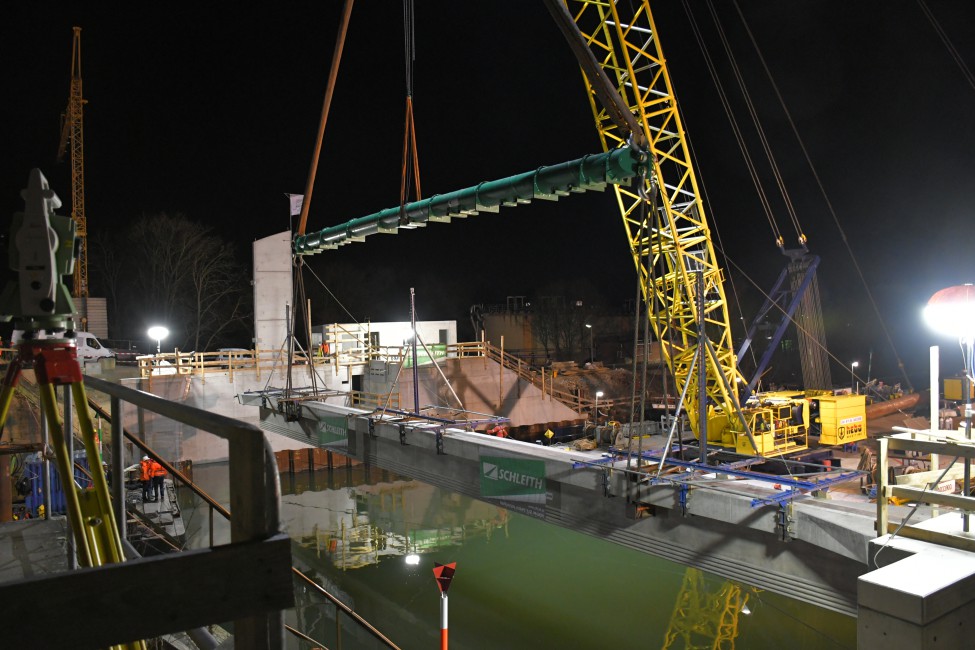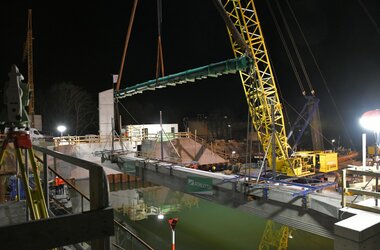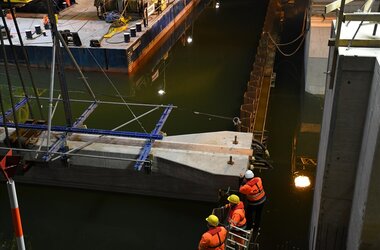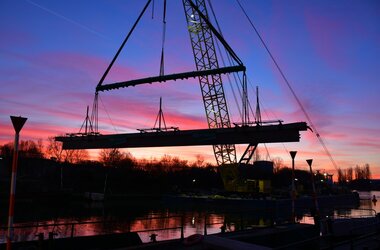Prefabricated part embedded in Neckar according to plan
The Ladenburg flood barrier gate blocks the side canal between Ladenburg and Mannheim-Feudenheim in the event of flooding in order to protect the communities from flooding. An innovative construction method was chosen for the new construction of this barrier gate.
The Ladenburg flood barrier gate blocks the side canal between Ladenburg and Mannheim-Feudenheim in the event of flooding in order to protect the communities from flooding. An innovative construction method was chosen for the new construction of this barrier gate.
A lock gate sill with a support rail is required to support the gate on the sole. A prefabricated sill was chosen in order to do without a construction method with a dry excavation pit and long, half-sided impairments of shipping in this respect. The sill of the lock gate is a precast element in prestressed concrete with a length of 37m, a height of 2m and a width of 2.60m as a plate beam.
Two abutments were erected on the side of the river bank, which will later house the revolving gate. Between these two abutments the prefabricated part is installed. Under water, a recess is made in the river bed by means of shoring, into which the prefabricated element is inserted. After installation at the final depth, the prefabricated element is fixed in the river bed with underwater concrete.
The prefabricated part is transported by SPMT vehicles to Ladenburg harbour where it is picked up by Hebo 8, the largest floating crane. Hanging on the crane, the prefabricated part is shipped to the site and lowered into the intended excavation pit. The entire installation operation is accompanied by a surveyor. The tolerance for displacement remains below the specified values of +-10 mm.
The lateral abutment pits are closed again after installation in order to connect the finished part with the empty pipes to the abutment.



